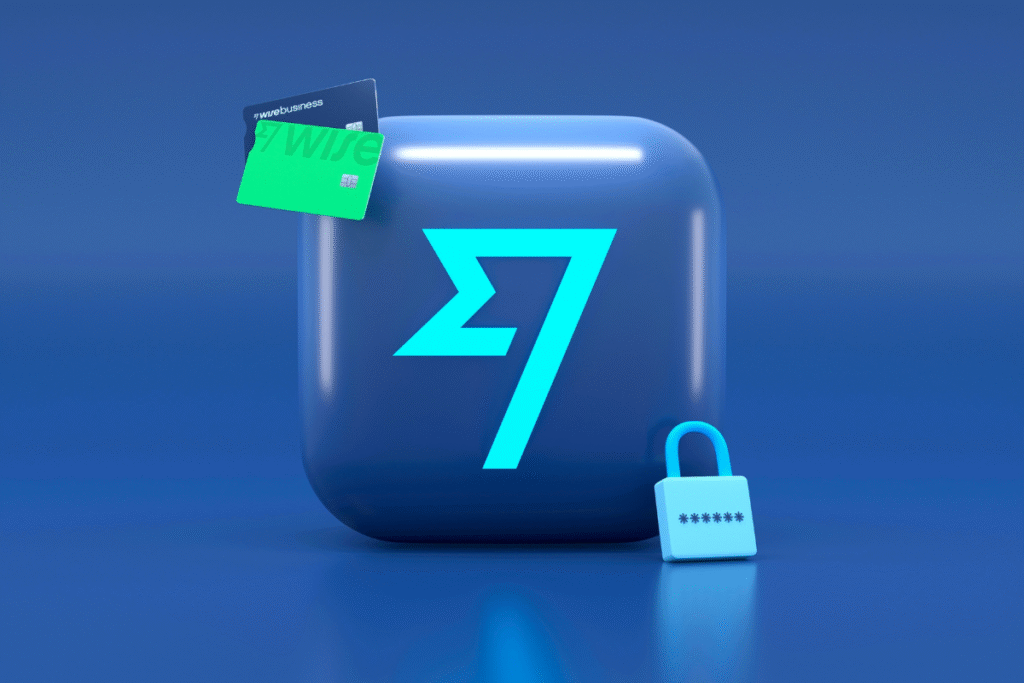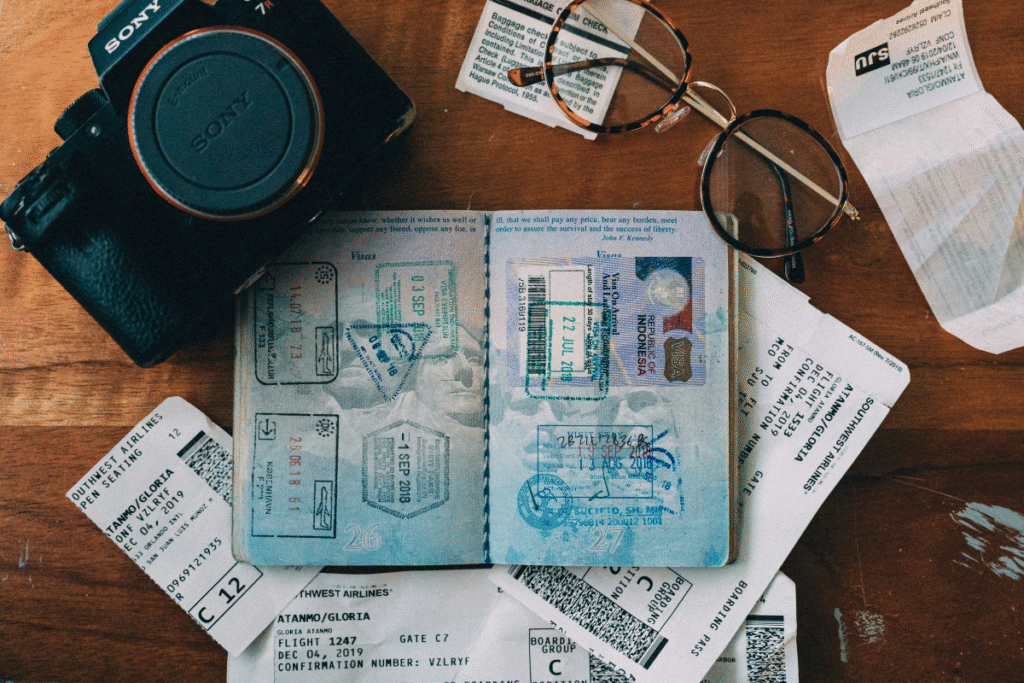Some of the links in this post are affiliate links, which means I may earn a small commission if you click through and make a purchase at no extra cost to you. I only recommend products I genuinely use and love. [Full disclosure here.]
Leaving your 9–5 job to embrace full-time travel is a major life shift. Whether you’re taking a career break, going freelance, or starting your own online business, the decision to leave your home base for a life on the road is exciting and a little overwhelming.
There’s a romantic side to it, of course: the freedom, the one-way ticket, the promise of a slower, more intentional life. But the reality is that long-term travel also requires a good amount of planning. From cancelling utilities to making sure your banking setup works overseas, there’s a long list of things to sort out before you step on the plane.
This guide was created to simplify the chaos. Think of it as your pre-departure roadmap; practical, focused, and built for real life. Take it one step at a time.

1. Give Notice at Work and End Your Lease
Check your employment contract and rental agreement early. Most jobs require two to four weeks’ notice, depending on your role and how long you’ve been with the company. Use this to lock in your exit date and build your timeline from there.
Your lease will likely have similar terms even if it’s ending naturally, you may still need to give written notice. If you’re breaking it early, expect to pay a fee. The cost usually depends on how much time is left on the lease and how long you’ve lived there.
If you own your home, decide whether you’ll rent it out or sell. Both options take time to coordinate, especially if agents or property managers are involved.
This is the foundation of your departure plan, so get it sorted first.
2. Declutter and Sell What You Don’t Need
Start with small items you don’t use anymore. Save bigger things like furniture and electronics for closer to your move, especially if you’re still using them. Facebook Marketplace works well for local pickups, and you might even make a little travel cash in the process.
If you plan to travel with just carry-on and checked luggage, begin editing your wardrobe and tech setup now to make sure you’re under the weight limits.
For sentimental or seasonal stuff, consider leaving it with someone you trust or renting a small storage unit.
3. Book Your Flight and First Week’s Stay
Booking in advance gives you more time to find a good deal. Try flexible dates or nearby airports to score lower fares. Just be aware: some countries won’t let you enter without proof of onward travel, even if you’re not planning a return flight. Fake tickets are still talked about online, but in 2025, authorities are cracking down. Your safest option is to buy a real, changeable ticket.
Once your flight’s locked in, book your first week or two of accommodation. It gives you breathing room to settle in, adjust to the time zone, and get your bearings before committing to anything long-term. Try to view places in person before renting monthly, online photos can be outdated, and you might discover issues like mould or noisy construction next door.
Facebook groups are great for finding longer-term stays, especially in countries where you don’t speak the language. You’ll often find better deals than on platforms like Airbnb.
Useful tools:
4. Set Up Travel-Friendly Banking

Most traditional bank cards charge high fees overseas and can freeze your account if they detect international use. Let your current bank know you’re travelling so your cards keep working.
Better yet, set up a digital-friendly bank account. Services like Wise or Revolut let you hold multiple currencies and transfer funds with minimal fees. Order your card at least a month before departure, they can take a while to arrive. You can use the physical card at ATMs, or tap your phone to pay in many places.
- Wise – Get a Free physical card
- Genki
- World Nomads
5. Book Travel Vaccinations
Health planning often gets overlooked in the excitement, but it’s critical for long-term travel. Book a travel consult with your GP or a specialised clinic at least five weeks before leaving. Vaccines like Hepatitis A/B or typhoid may require multiple doses, so timing matters.
Your doctor can also prescribe travel medications like malaria tablets or offer tips for managing chronic conditions abroad.
6. Pause Your Private Health Insurance
If you’re based in Australia, you can pause your private health insurance for up to two years. This means you won’t pay while you’re away, and your waiting periods won’t reset when you resume your policy later.
7. Get Long-Term Travel Insurance
Standard travel insurance doesn’t work well for open-ended trips—it usually requires fixed dates. Look for a policy designed for digital nomads instead. These plans often offer rolling coverage and monthly payments, with optional extras like accident or belongings cover.
Recommended providers:
- SafetyWing
- World Nomads
- Genki
Compare plans based on your age, destination, and whether you need cover for pre-existing conditions.
8. Cancel Utilities and Subscriptions
It’s easy to forget about these when your focus is on flights and passports. But leaving active accounts behind can cost you money.
Call your energy provider to schedule a final meter reading. Cancel or transfer your phone plan, internet, gym memberships, transport cards, and any local subscriptions you no longer need.
If you’ve subscribed to physical mail services, magazines, or food boxes, now’s the time to cancel those too.
9. Keep Your Number and Get an eSIM
Your phone number is often tied to two-factor authentication for apps and bank accounts, so it’s worth keeping it active. In Australia, you can port your number to a low-cost prepaid plan that stays valid with minimal or no monthly use.
For local data abroad, download an eSIM before you leave. Apps like Airalo or Saily let you connect to local networks instantly without needing a physical SIM.
You can run both at once, just set your eSIM as primary when you land to avoid roaming charges.
Top providers:
- Amaysim – Get $10 Credit
- Aldi Mobile
- Boost Mobile
For local data abroad, set up an eSIM before you land. You can set it up before you land to allow instant access to mobile networks in most countries without needing a physical SIM.
If you want to learn more about esim and porting your number check out our Phone Number Setup for Digital Nomads: My Exact System
10. Use a VPN
A VPN (virtual private network) protects your data on public Wi-Fi—crucial when accessing bank accounts or logging into sensitive apps. It also lets you access region-locked content, like your usual streaming services while abroad.
Trusted VPNs include:
- NordVPN – Get 3 months FREE
- Surfshark
- ExpressVPN
11. Prepare Your Tech
Think practically about what you’ll need on the road. Essentials include:
- External hard drive or cloud backup service
- Power bank and spare cables
- Universal travel adapter
- Noise-cancelling headphones
- A tracker (like AirTag) for your luggage
These tools make travel smoother and help protect your gear from loss, theft, or damage.
12. Check Your Passport and Apply for Visas

Your passport needs at least six months’ validity beyond your arrival date. Even minor damage like tears or stains can cause problems at immigration, so inspect it closely.
Many countries now require online visa applications or eVisas. These often have strict photo guidelines, payment methods, and processing times. Start early, and avoid last-minute stress. If you make a mistake, you’ll likely need to reapply entirely.
Be aware: if you change your entry date after getting your visa, you may need to submit a new application. Save both digital and printed copies—many countries still require paper documents at immigration checkpoints.
13. Download Travel Apps
Having the right apps on your phone can make long-term travel smoother, more efficient, and less stressful. From budgeting to booking transport, these tools can save time, reduce overwhelm, and help you stay organised on the go.
Here are the categories worth setting up before you leave:
Transport
Top picks: Grab / Uber / Bolt / Didi
Currency Conversion
Recommended apps: XE Currency / Currency Converter Plus
Translation
Best options: Google Translate / Papago / DeepL
Trip Planning and Organisation
Try: Notion / TripIt / Wanderlog
Budget Tracking
Popular tools: TravelSpend / Trail Wallet / Spendee
Taking 20 minutes to get your digital toolkit in place now can save you hours — and a few headaches — later.
Preparing to leave for long-term travel isn’t just about packing a bag and booking a flight, it’s about setting yourself up for a smoother, more sustainable life on the road. Taking the time to sort out your logistics now means fewer surprises later and more energy to focus on what really matters: living fully, exploring slowly, and building a lifestyle that actually fits you. Use this checklist as your guide, revisit it when you need to, and trust that every small step gets you closer to the freedom you’re chasing.
